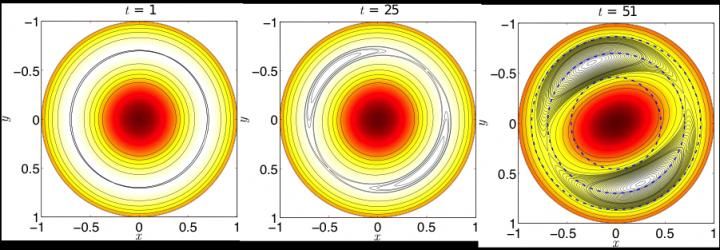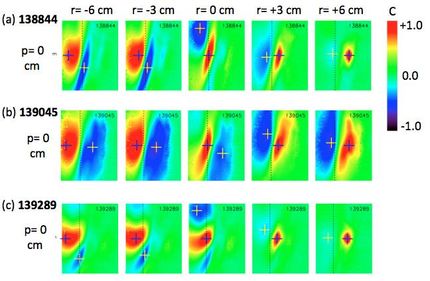Explaining a mysterious barrier to fusion known as the 'density limit'
For more than 50 years physicists have puzzled over a daunting mystery: Why do tokamak plasmas spiral apart when reaching a certain maximum density and halt fusion reactions? This "density limit" serves as a barrier that prevents tokamaks from operating at peak efficiency, and understanding what sets this maximum density would speed the development of fusion as a safe, clean and abundant energy source.

Visualization of a magnetic island growing in a tokamak plasma.
Courtesy of Qian Teng
Recently, researchers at the U.S. Department of Energy's Princeton Plasma Physics Laboratory (PPPL) have revisited an old idea: bubbles called magnetic islands that form in the confining magnetic field produce the observed density limit. The PPPL team, led by David Gates with Roscoe White, Luis Delgado-Aparicio and Dylan Brennan, found new physics overturning decades of thought on the growth of these bubbles.
The new PPPL research locates this physics in the process by which the islands are cooled by impurities that stray plasma particles kick up from the walls of the tokamak. Countering this cooling is heating that researchers pump into the plasma. But the scientists found that even a tiny bit of net cooling in the interior of the islands can cause them to grow exponentially, leading to disruption of the crucial current that runs through the plasma and completes the magnetic field that holds the hot gas together.
If confirmed by experiment the findings could lead to steps to overcome the barrier, also known as the "Greenwald limit" after Massachusetts Institute of Technology physicist Martin Greenwald, who derived an empirical rule for it. The PPPL model quantitatively reproduces the empirical Greenwald density limit.
Still to come are explorations of effects such as turbulent transport of particles, heat and the impurities that lead to plasma cooling. Examining these conditions should provide further evidence that the local power balance inside an island can serve as a very accurate prediction of the density limit.
Most read news
Topics
Organizations
Other news from the department science

Get the chemical industry in your inbox
From now on, don't miss a thing: Our newsletter for the chemical industry, analytics, lab technology and process engineering brings you up to date every Tuesday and Thursday. The latest industry news, product highlights and innovations - compact and easy to understand in your inbox. Researched by us so you don't have to.




























































